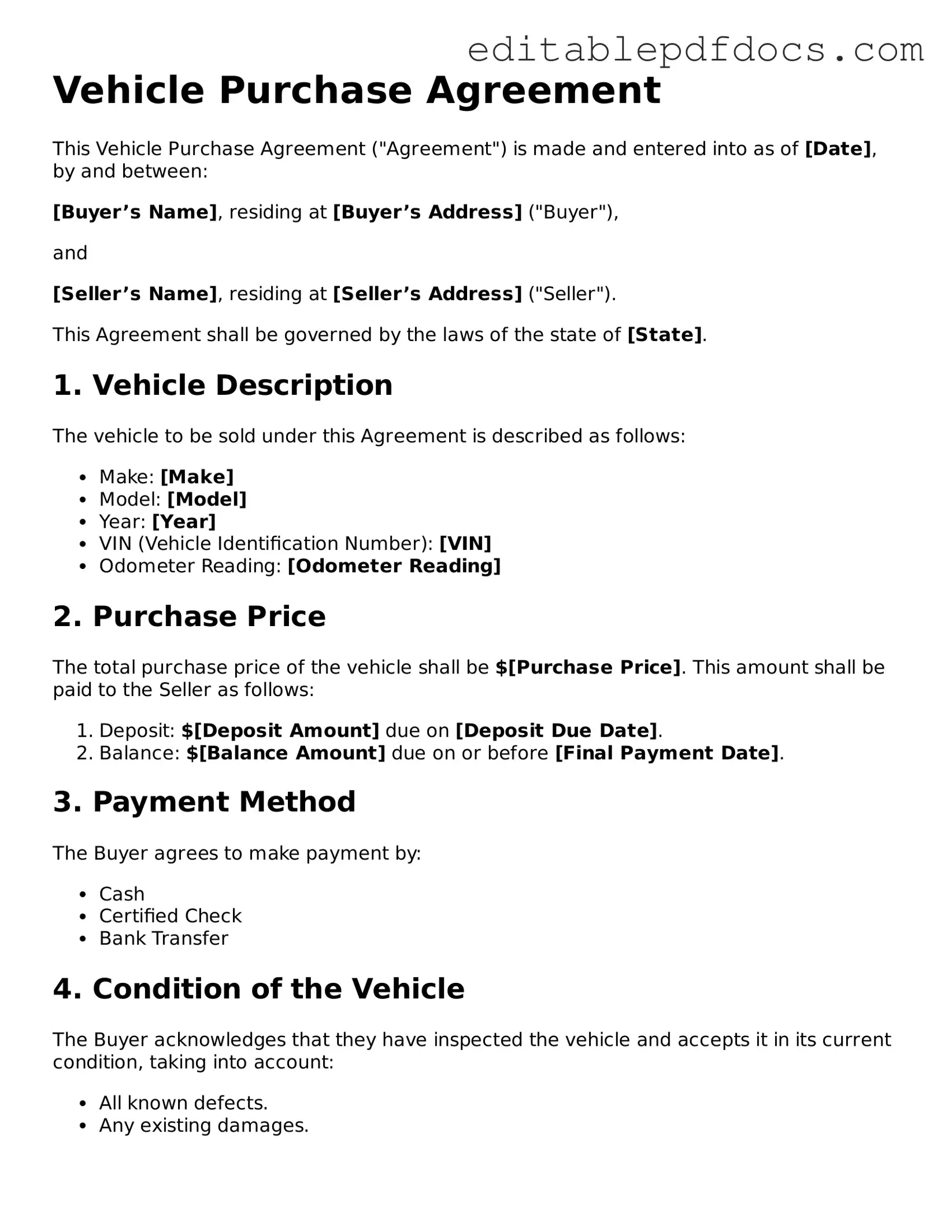Free Vehicle Purchase Agreement Document
The Vehicle Purchase Agreement form is a legal document that outlines the terms and conditions of a vehicle sale between a buyer and a seller. This agreement serves to protect both parties by detailing the specifics of the transaction, including the purchase price, vehicle condition, and any warranties. To ensure a smooth transaction, consider filling out the form by clicking the button below.
Open Editor Now
